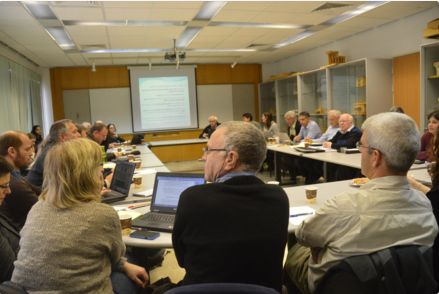GIS-based interactive decision making tool
The ASDA GIS (Asda = platform in Hebrew) tool for marine spatial planning supports existing layers of information as well as the products of the ongoing planning process in an inclusive, flexible, visual, transparent, and participatory way. It allows experts and professional stakeholders from different disciplines to cross-reference and analyze data, respond and participate interactively, hold dialogue, and exchange spatial and textual ideas and opinions relating to planning the marine space. This tool serves all participants and showcases the plan’s products at its various stages. It provides solutions in three areas of activity: planning, participation, and management. The planning component is designed for professional experts and advisors from different disciplines, enabling group dialogue among experts & flexible and visual exchange of information and ideas regarding marine spatial planning; the participation component is designed for the general public & stakeholders, enabling observation of & reaction to the marine spatial plan’s work products; the management component is designed for decision makers at various levels, enabling spatial and statistical analyses as well as information-based reviews of development scenarios.
1) Funding
2) Capacity (staff with GIS and programming skills)
The lack of willingness of the planning staff to support the development of such a tool can be a major challenge. When planning the ASDA as part of the Israel Maine Plan, several planners were not supportive. They preferred to use hard-copy maps and thought the on-line tool would be a waste of time. Among the members of the core planning team, supporters made up about 50%. Having more young, internet savvy people, and perhaps more academics (interested in innovative solutions) on the core team could help solve this problem. Another activity that could have helped in this regard, would have been to monitor the use of the tool, thus "proving" its utility. In the end, this was not done systematically or thoroughly. There needs to be a certain openness to this type of tool, especially by those who are not familiar with the technology. Political and technical support is required not only for the development of the tool but also for promoting it and using it at every opportunity.
